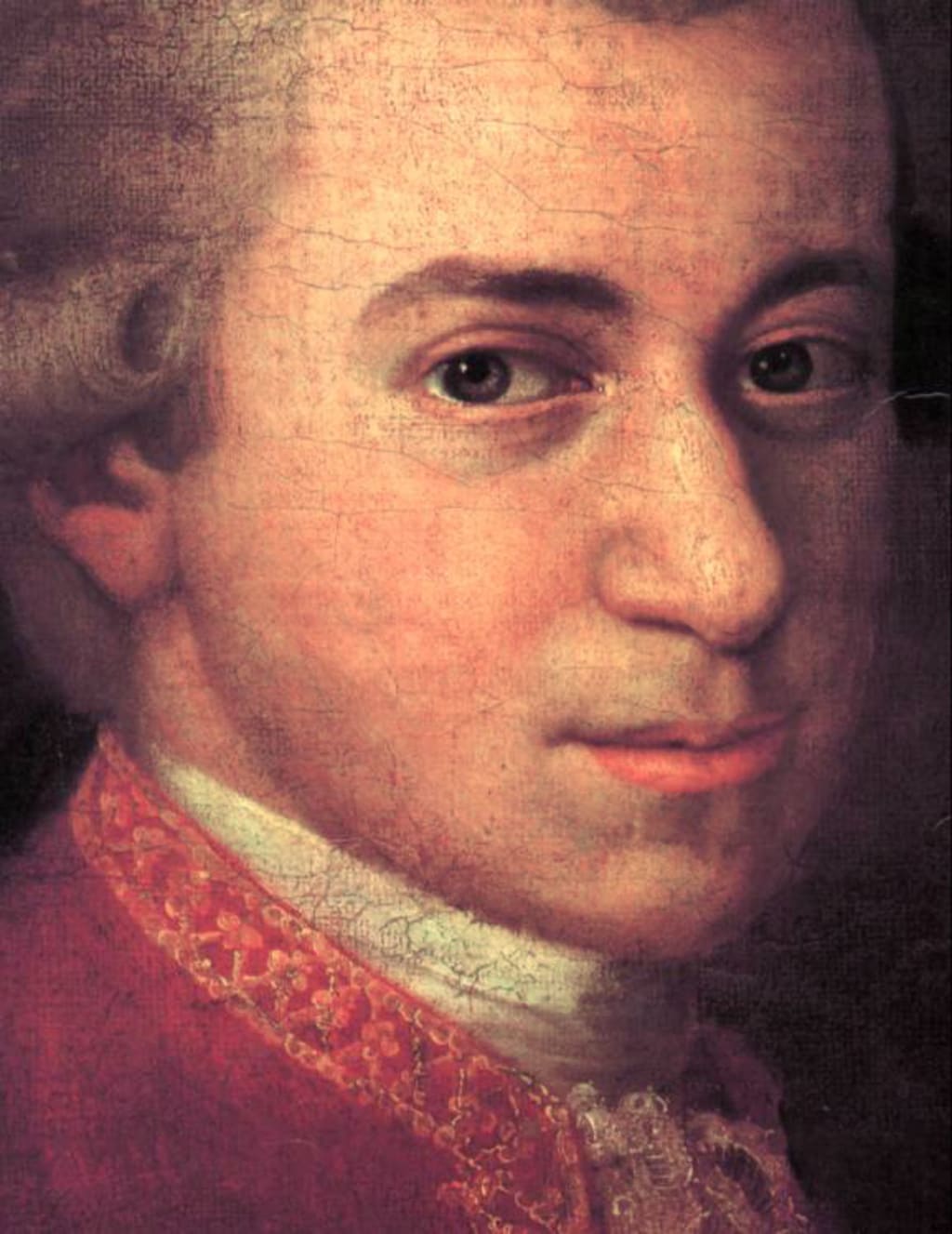
Wolfgang Amadeus Mozart was born on January 27, 1756, but he was baptized under the name Johannes Chrysostomus Wolfgangus Theophilus Mozart.
What’s In A Name
When he was an adult, he referred to himself as “Wolfgang Amadè Mozart,” signing his marriage certificate that way. His baptismal name was Latinized, as was common in those days, and he was christened on the feast day of St. John Chrysostom. Theophilus was the middle name of his godfather, Johannes Pergmayr.
The names Amadeus and Theophilus are equivalents of each other; Amadeus is from the Latin “amare + Deus” while Theophilus is “Theo + philos” from the Greek for “lover of God” or “beloved by God.” In German, it would be Gottlieb. His father once wrote a letter calling his newborn son “Wolfgang Gottlieb.”

But his middle name is entered into the records of the Vienna Magistrate when he died: “Wolfgang Amadeus.” This has become the nickname that modern fans use for the musician, including the title of an eponymous movie about his life.
Mozart in Salzburg
Salzburg, Austria, is famous for being the filming location for the film The Sound of Music, and there are tours everywhere. But it used to be renowned also as the birthplace of Mozart.
He was born in a flat on the third floor above what is now a shop at Getreidegasse 9.
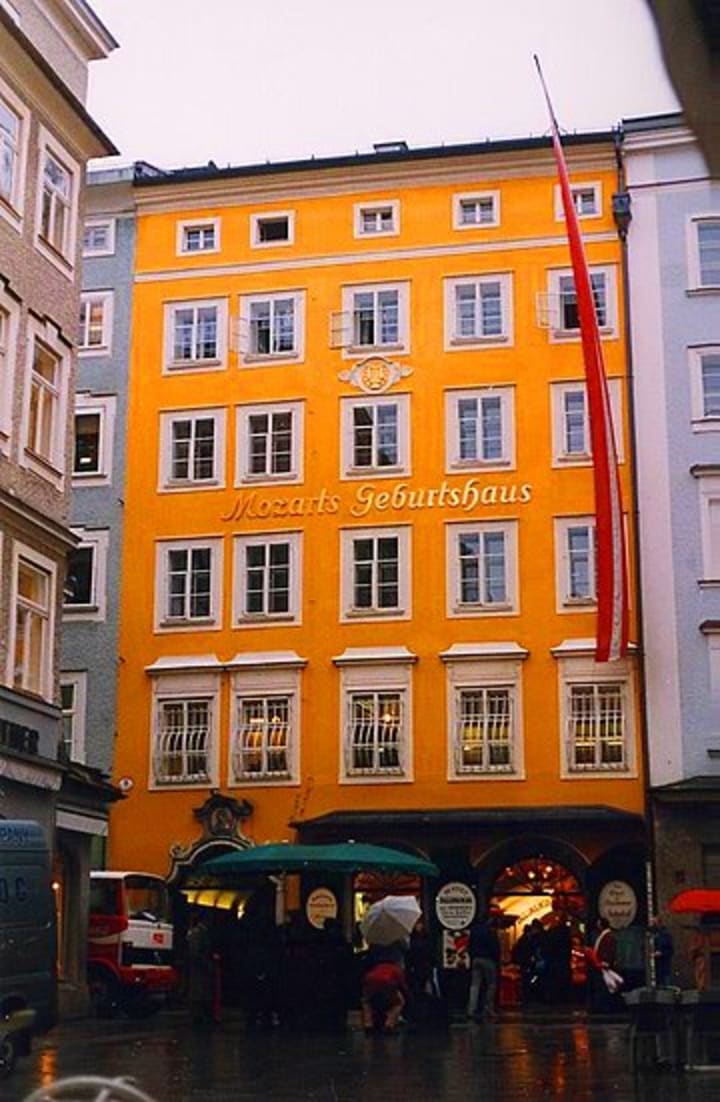
My father had been in Salzburg in October 1945 after World War II, and as I walked down that street exactly 50 years later, I wondered if he had been on that street. A walk up to his flat, which is now a museum, brought me to the fortepiano that his father had taught him to play. In the museum, you can also see his childhood violin, harpsichord, and the clavichord upon which he composed The Magic Flute. And when you descend to the shop at street level, you can purchase Mozart Austrian chocolates.
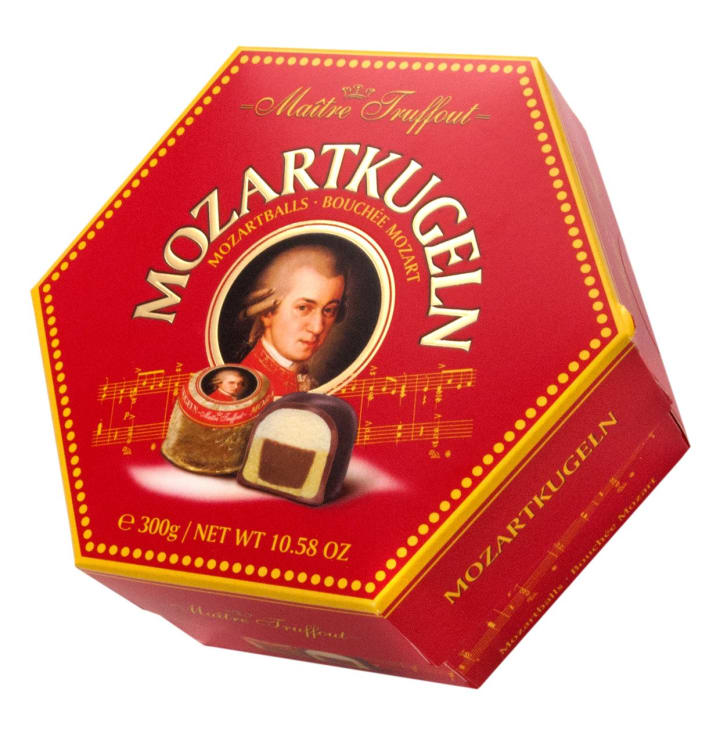
Mozart’s father Leopold had originally been from Augsburg, Germany, and was, if not a famous composer, was an experienced music teacher and gained acclaim for his book on violin instruction. He had been a violinist in the court of Count Leopold Anton von Firmian, the Prince-Archbishop of Salzburg. He went on to become the Kapellmeister, or “chapel choirmaster.” In Eisenach, Germany, Johannes Sebastian Bach's father had also been Kapellmeister half a century earlier.
Mozart’s Early Life
By the age of four or five, while watching his older sister learn music from their father, Mozart composed small pieces of music that his father wrote down. He soon progressed beyond what his father had taught him, and he took up the violin on his own initiative.
His father took him and his sister on tours of Europe, where they performed as child prodigies. When he was six, he performed at the court of Prince-elector Maximillian III of Bavaria at the capital in Munich and Imperial courts in Vienna and Prague.
He went on a more extended tour to Mannheim, Paris, London, The Hague, and Zurich. When he was eight, he met Johann Christian Bach in London, the youngest son of Johannes Sebastian Bach, who had a significant influence on him. Later that year, Mozart wrote his first symphony.
Mozart, A Prodigy
When I was working at Sun Microsystems back in the early ’90s, on the company’s tenth birthday, it created a poster humbly comparing itself to the 10-year-old prodigy Mozart.
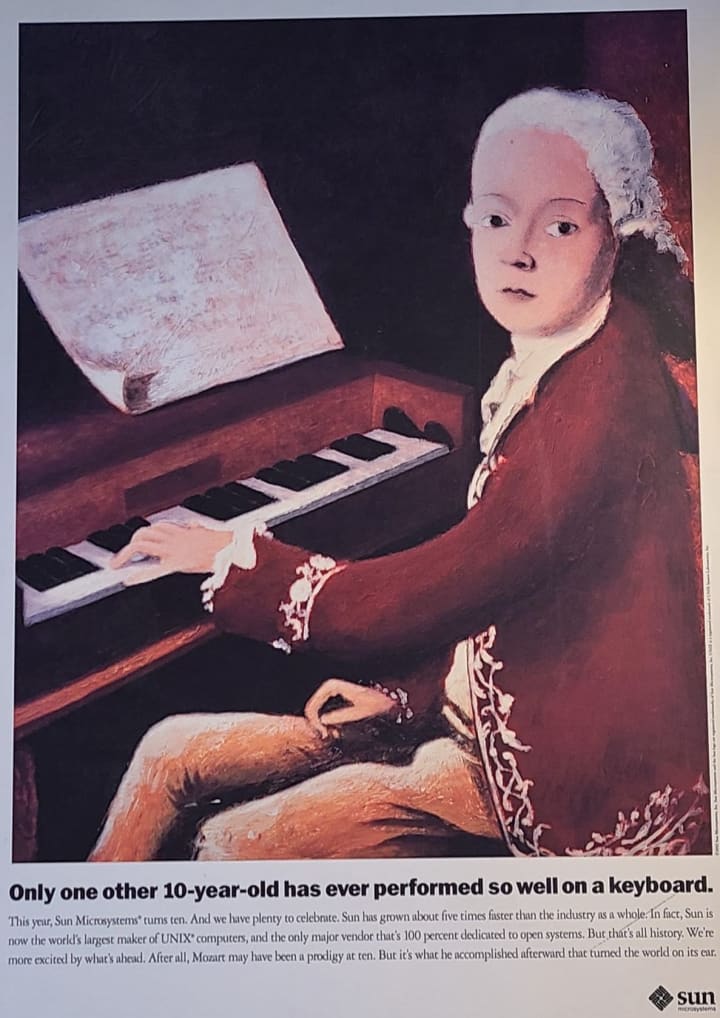
“Only one other 10-year-old ever performed so well on a keyboard.”
Mozart at Court
By seventeen, Mozart was hired by Prince-Archbishop Hieronymus Colloredo as a court musician in Salzburg. He expanded his interest by working with symphonies, violin and piano concertos, sonatas, string quartets, masses, serenades, and even opera.
Mozart in Paris
Resigning his position in Salzburg at the age of twenty-one in 1777, he ventured to Augsburg, Mannheim, Munich, and Paris. At twenty-two, after a year in Paris and an unsuccessful love affair, he traveled to Mannheim and Munich seeking employment outside of Salzburg. But he returned to become court organist and concertmaster in Salzburg in 1779.
All Roads Lead to Vienna
In March of 1778, he was summoned to Vienna at the request of his employer Archbishop Colloredo who was attending the coronation of Emperor Joseph II to the throne of Austria. Mozart leveraged this trip to meet the Emperor, who was impressed enough with the young man to support him by offering him part-time commissions. He subsequently left the employ of the Archbishop on poor terms and took up freelance jobs as a performer and composer in Vienna.
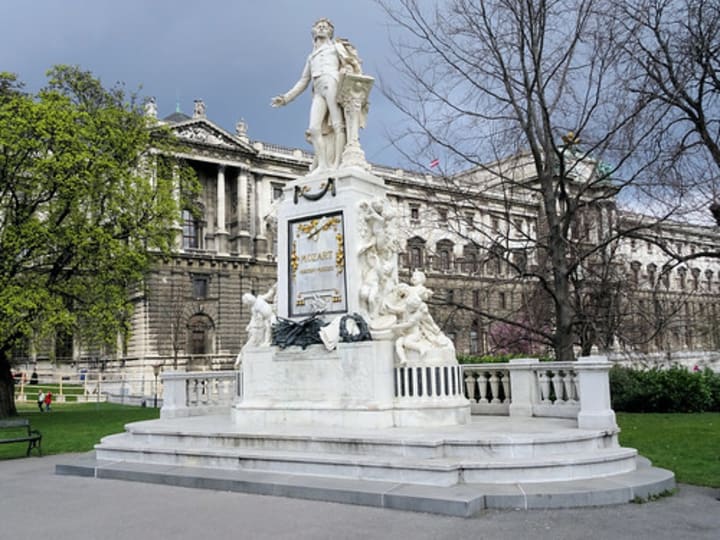
While in Vienna, he found success as both a performer and opera composer. There he would marry Constance Weber and have six children. Influenced by Baroque masters Johannes Sebastian Bach and George Frederic Handel, he composed in the same style. He also became friends with Joseph Haydn and would play together with him in a string quartet. Mozart dedicated six quartets to Haydn, who wrote to Mozart’s father:
“I tell you before God, and as an honest man, your son is the greatest composer known to me by person and repute, he has taste and what is more the greatest skill in composition.“
As Mozart’s concerts became popular and delighted audiences, he and his wife adopted a lifestyle of more extravagant luxury. He was able to send his son to boarding school, hire servants, and buy a rich fortepiano. He wrote fewer operas and turned to solo piano solos and concerto writing. He gained success with The Marriage of Figaro in both Vienna and Prague. In Prague, he premiered and conducted the opera Don Giovanni at the Estates Theatre in 1787.
Mozart in Prague
Mozart became a “rock star” in Prague. The National Theatres featured his performances and operas, and the Bohemian (Czech) inhabitants were especially appreciative. It was said that Mozart started his operas and symphonies quite loudly as theatres during that time were places to socialize with friends and conduct business. His boisterous openings would capture attention.
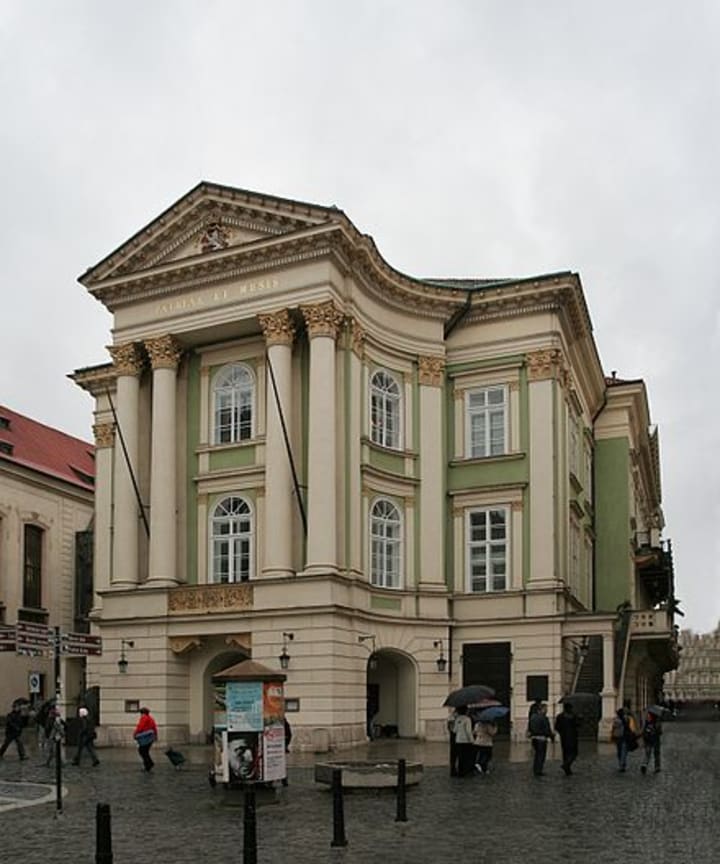
Mozart’s Later Years in Vienna
In 1787 Mozart obtained official patronage under Emperor Joseph II as his “chamber composer.” Though it was only part-time, it was steady employment. During that year, Ludwig van Beethoven visited Vienna in the hopes of studying with Mozart, but there is no documentation to suggest they ever met.
Times grew harder in 1786 with the Austro-Turkish War, limiting public concerts and aristocratic music support. Mozart fell into debt, and his writing output decreased; he began to tour again throughout Germany.
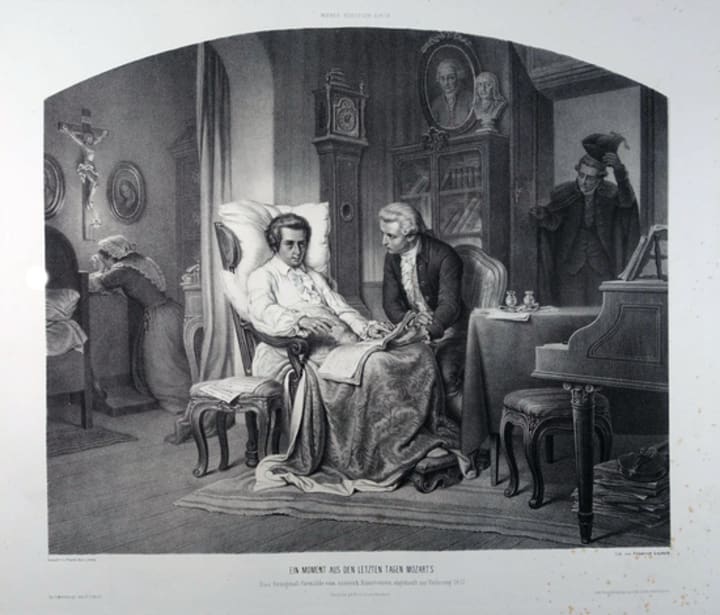
In 1791 he had a spurt of great productivity, composing The Magic Flute, The Clarinet Concerto K. 622, Ave verum corpus K. 628, and the unfinished Requiem K. 626. But later that year in Prague, he fell ill for the premier of the opera La clemenza di Tito. Afterward, he became confined to bed back in Vienna and died on December 5, 1791, at the age of 35.
Mozart’s Funeral
Many of the accounts about Mozart’s funeral have been fictionalized or misunderstood. The Grove Dictionary of Music and Musicians describe his funeral in this way:
“Mozart was buried in a common grave, in accordance with contemporary Viennese custom, at the St. Marx Cemetery outside the city [of Vienna] on 7 December.”
This has led some to believe it was a “pauper’s grave” or an unmarked one. Instead, the term common grave is in contrast to that of an aristocrat’s grave. Common graves could be interred in 10 years to make room for another burial, unlike an aristocrat’s, which was permanent. Mozart’s grave would have been marked with no more than a simple wooden marker if that.
His resting place at St. Marx Cemetary is now a city park, with memorial stone set in 1895.
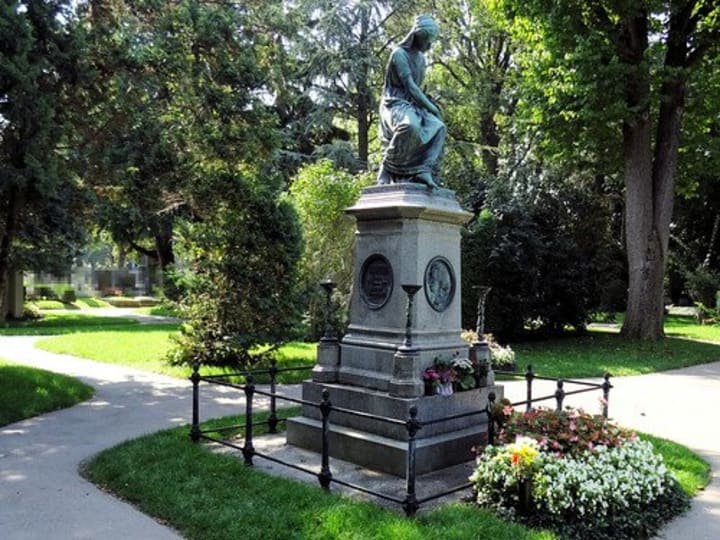
While the Viennese response to his funeral may have been modest with few mourners and no special music performance, the Praguers granted him greater honor. The grief exhibited for Mozart in Prague after his death far exceeded that witnessed in any other European city. Within nine days of his death, thousands of mourners gathered in Prague to pay their respects to Mozart. Over a hundred musicians performed a lavish Requiem mass and accepted no pay for their work.
Why Was Mozart So Popular in Prague?
The musical education of children in Prague was unlike any other, even in larger European cities, primarily due to the importance placed on church music. Italians may have been as talented, but Praguers were better trained in music notation and various technical aspects of making music. They had a better appreciation of Mozart’s style, while others found it too complicated and extravagant. As Emperor Joseph II is reported to have said of Mozart’s playing of The Abduction from the Seraglio:
“Too many notes.”
Prague’s Bohemian wind instrument players were famed across the continent for their skills; Mozart had an unusual ability to compose for wind instruments with his extraordinary imagination. Prague set about providing for Mozart’s widow Constance and orphaned children. In Prague, she organized concerts in memory of her husband, which proved lucrative for her family.
It was rumored that Mozart once said:
“My Praguers understand me.”
Amadeus
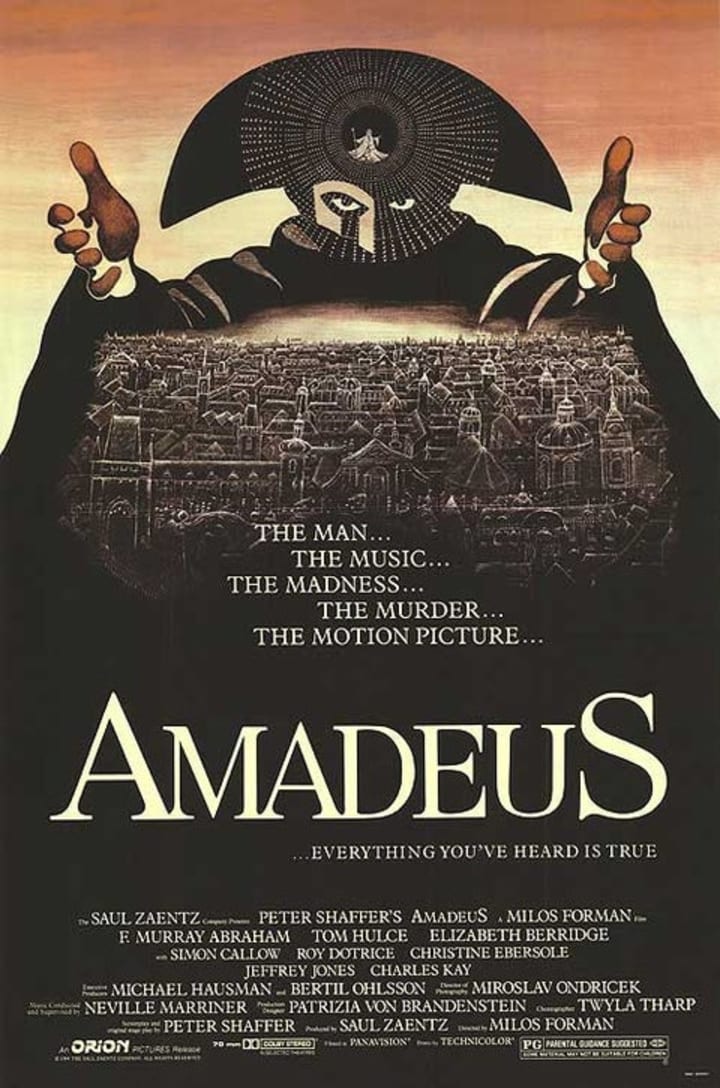
The Academy Award-winning film Amadeus, though set in Vienna, was filmed in and around Prague for several reasons, not the least of which was that the director Milos Forman was a native of Prague. (I went by his house.) An orphan at a young age — his father died in Buchenwald, and his mother died in Auschwitz — Forman studied screen-writing at the renowned Prague Film Academy.
Other than four sets built for the film, all other locations were found locally. Under Communist rule in 1983, during the filming, there were very few TV antennas, plastic, or asphalt in Prague.
Indeed, The performance of Don Giovanni in the movie was filmed on the same stage where the opera first appeared.
I’ve been to a theatre performance in Prague, and it is absolutely stunning, every seat affords an excellent view of the stage. This is a photo of the National Theatre, built a century and a half after the Estates Theatre.
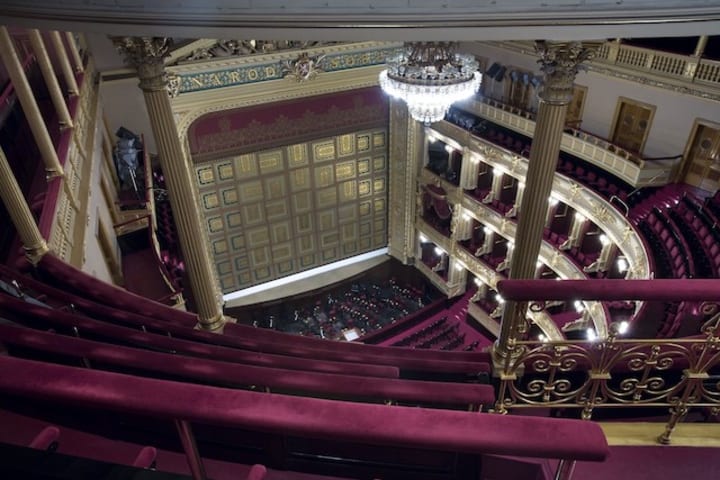
Bill Petro, your friendly neighborhood historian
If you enjoyed this article, please consider leaving a comment. Subscribe to have future articles delivered to your email.
About the Creator
Bill Petro
Writer, historian, consultant, trainer
https://billpetro.com/bio

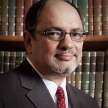




Comments
There are no comments for this story
Be the first to respond and start the conversation.